Atlanta Falcons Make Much-Needed Changes in Short-Yardage Running Game
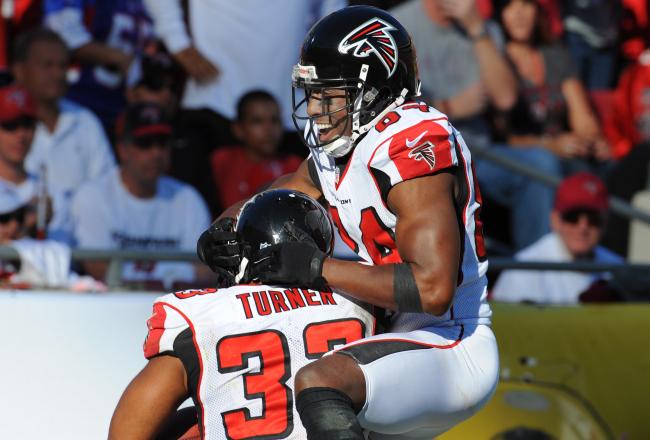
Al Messerschmidt/Getty Images
Atlanta Falcons’ Fans have been calling for a changing of the guard for a good portion of the season at running back.
As Discussed in his blog, D-Led deals with the "Running Back By Committee" debate.
Michael Turner has had trouble in short-yardage situations and is averaging just 3.5 yards per carry. Four times this season Turner has been held to under 40 yards in a game, and he’s only eclipsed 100 yards twice in 11 tries.
Jacquizz Rodgers is averaging 3.9 yards per carry and has only hit double-digit carries in a game twice. His 60 carries on the year are 108 fewer than Turner, and many believe Rodgers would be more effective as the primary ball carrier.
In Sunday’s 24-23 win over the Tampa Bay Buccaneers, Turner still carried the ball three more times than Rodgers (Turner had 13 carries, Rodgers 10), but Rodgers caught two passes, almost locking the two running backs in a dead heat for touches.
But Rodgers was on the field a lot more than Turner.
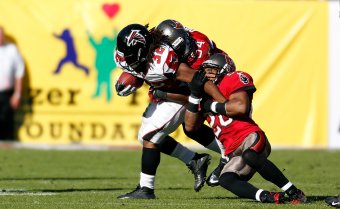
J. Meric/Getty Images
Rodgers played in 31 (52 percent) of Atlanta’s 60 offensive plays. Turner was on the field for just 23 (38 percent).
With Rodgers getting more playing time, it might not be too far off that he’s getting more carries as well. But playing time for the running backs isn’t the only change in the running game. Atlanta has changed the way it calls plays near the goal line.
Turner’s shortcomings running the ball in the red zone are well documented. He’s had trouble making headway through the line of scrimmage and has frequently been obliterated before he even gets back to the line.
To counter those issues, Atlanta scored two running touchdowns by pitching the ball out wide instead of trying to power behind its offensive line.
On 3rd-and-1 from Tampa Bay’s 6-yard line, Atlanta lined up with quarterback Matt Ryan in the shotgun and Rodgers line up to his right in 11 Personnel.
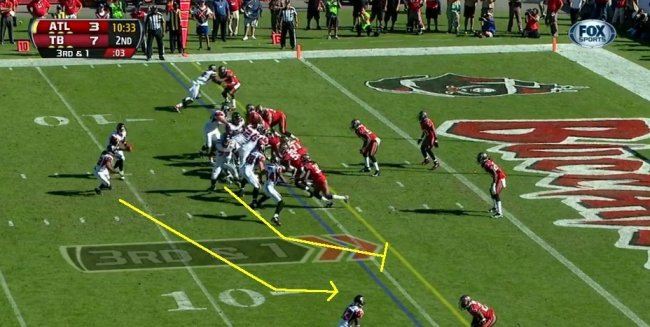
courtesy NFL.com
Ryan quickly pitched the ball out to the right and Rodgers took off for the front corner of the end zone. Right tackle Tyson Clabo pulled and came out as a lead blocker for Rodgers.
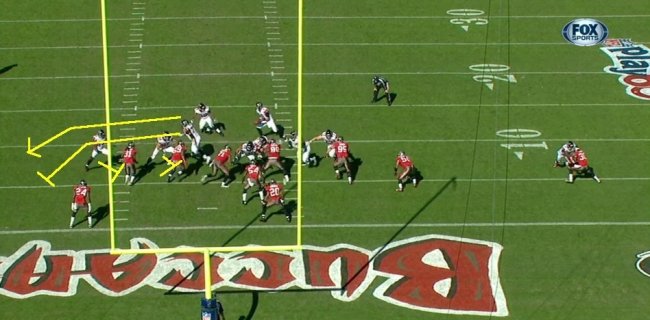
courtesy NFL.com
You can see that tight end Tony Gonzalez and wide receiver Roddy White blocked down to allow Clabo to release and give Rodgers a bit of time to explode free.
Clabo blocked safety Mark Barron and his huge frame slowed linebacker Lavonte David and safety Ronde Barber, allowing Rodgers to enter the end zone untouched.
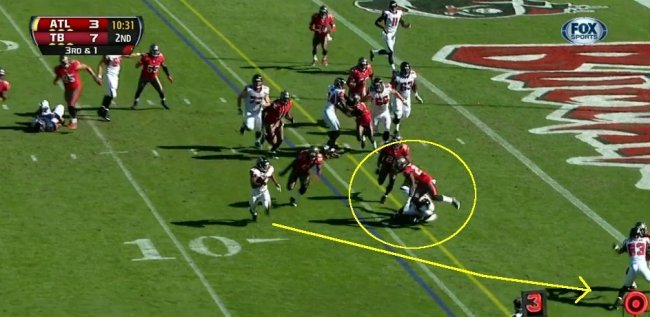
courtesy NFL.com
Atlanta’s second touchdown run of the game came just inside Tampa Bay’s 3-yard line on first down.
Ryan is under center with Turner lined up by himself seven yards behind the line of scrimmage in 12 Personnel.
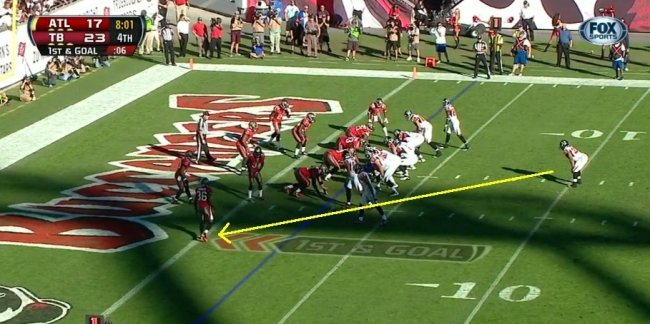
courtesy NFL.com
Ryan pitches the ball to the left and Turner breaks toward the front corner of the end zone as White, again, blocks down allowing the tackle—this time left tackle Sam Baker—to release out as a lead blocker for Turner.
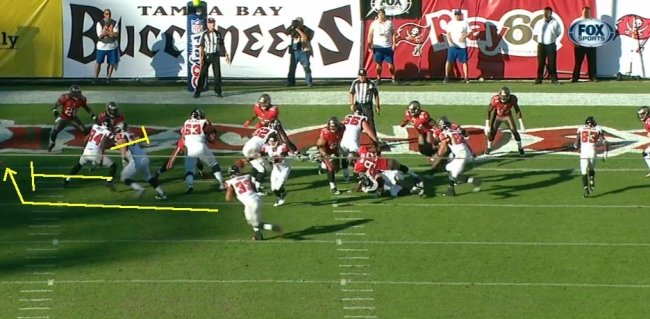
courtesy NFL.com
Turner saw an opening and cut back instead of heading all the way to the front pylon, and still made it into the end zone with minimal contact.
After many failures running straight into the line, trying to find an open gap with a hole big enough, Atlanta has switched goal-line philosophies—at least in the Tampa Bay game—to pitch and run wide with a pulling tackle.
No comments:
Post a Comment